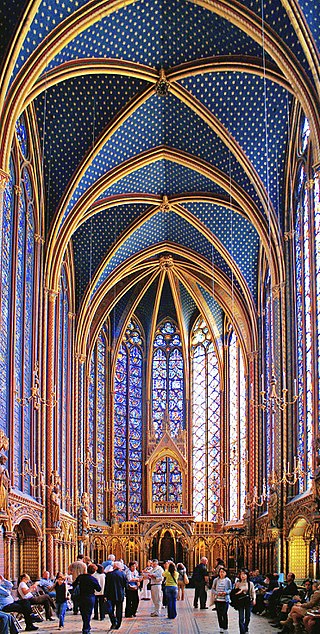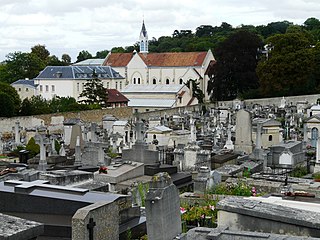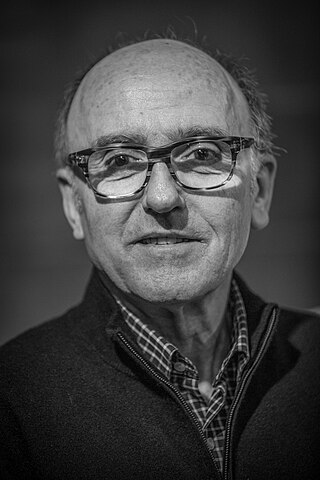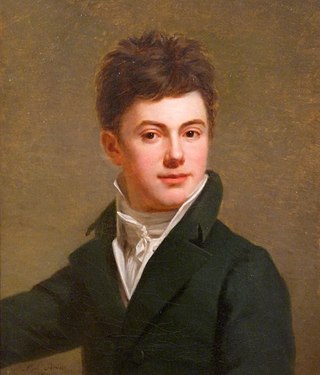
(date unknown)
Claudius Lavergne (10 December 1815 - 31 December 1887) was a French artist who primarily worked in stained glass. He was also an art critic and an inspector of historical monuments.

Claudius Lavergne (10 December 1815 - 31 December 1887) was a French artist who primarily worked in stained glass. He was also an art critic and an inspector of historical monuments.
Lavergne was born in Lyon. His father, Marin Lavergne (1796-1881), was a painter of heraldry and carriages. His mother, Marie, died while giving birth to his brother Pierre in 1817. He began his education at a school associated with the Basilica of Saint-Martin d'Ainay. After graduating, he attended the École nationale supérieure des beaux-arts de Lyon, where he studied with Claude Bonnefond. In 1834, his father sent him to study with Ingres at the French Academy in Rome.

Lavergne had his first exhibit at the Salon in 1838, with a painting of Jesus surrounded by children. In 1840 he returned to France, for health reasons, and became a member of the Third Order of Saint Dominic. [1] Four years later, he married Julie Ozaneaux , a daughter of the writer and academician, Georges Ozaneaux in the church of Saint-Louis-en-l'Île by Abbé Jean-Baptiste Henri Lacordaire. [2] They were friends of Gaspard Mermillod. She became a writer, of tales and short stories. They had nine children, two of whom died in infancy. Two others became religious sisters, and died young. [2] Their son Georges-Claudius Lavergne (1847-1923) became famous as a master glassmaker.
Lavergne produced his first major work in 1853: a mural in the chapel of the Château de Châtillon-d'Azergues. Three years later, the sculptor Émilien de Nieuwerkerke, acting as an agent of the Second Empire, commissioned him to design twelve windows depicting the twelve apostles for the chapel at the Hôpital Lariboisière, with the stipulation that he also create the windows. As a result, Lavergne opened his first workshop in Paris. [3]
Lavergne worked with Eugène Viollet-le-Duc as an architectural inspector, which enabled him to deepen his knowledge of stained glass and begin a new artistic career, creating a glass painting workshop that would be passed to his sons Georges and Noël. [4] Later, he became President of the Union of Master Glassmakers; a position he held until his death. During this time. he also worked as an art critic for L'Univers illustré .[ citation needed ]
In addition to his original works, he restored windows at the Chapels in the Château de Versailles, and the Château de Blois, as well as at the Church of Saint-Léonard in Alençon, the Cathédrale Notre-Dame de Noyon, and the Cathédrale Saint-Pierre de Rennes. These works earned him the title of Commander in the Order of St. Gregory the Great.
For the Chapel of St. Augustine in Notre-Dame-des-Victoires, Paris, Lavergne did a beautiful stained glass window depicting Louis XIII consecrating France to Mary. [5] Behind the choir is a "Crucifixion", also by Lavergne. [6]
Lavergne died at his home in Paris, shortly after his seventy-second birthday, and was interred at the Cemetery of Saint-Louis, Versailles.

The Sainte-Chapelle is a royal chapel in the Gothic style, within the medieval Palais de la Cité, the residence of the Kings of France until the 14th century, on the Île de la Cité in the River Seine in Paris, France.

Auxerre Cathedral is a Roman Catholic church, dedicated to Saint Stephen, located in Auxerre, Burgundy, France. It was constructed between the 13th and 16th centuries, on the site of a Romanesque cathedral from the 11th century, whose crypt is found underneath the cathedral. It is known for 11th century Carolingian frescoes found in the crypt, and for its large stained glass windows. Since 1823 it has been the seat of a diocese united with that of Sens Cathedral.

Rouen Cathedral is a Catholic church in Rouen, Normandy, France. It is the see of the Archbishop of Rouen, Primate of Normandy. It is famous for its three towers, each in a different style. The cathedral, built and rebuilt over a period of more than eight hundred years, has features from Early Gothic to late Flamboyant and Renaissance architecture. It also has a place in art history as the subject of a series of impressionist paintings by Claude Monet, and in architecture history as from 1876 to 1880, it was the tallest building in the world.

Anne-François-Louis Janmot was a French painter and poet.

Toulouse Cathedral is a Roman Catholic church located in the city of Toulouse, France. The cathedral is a national monument, and is the seat of the Archbishop of Toulouse. It has been listed since 1862 as a monument historique by the French Ministry of Culture.

The Church of Saint-Merri or Église Saint-Merry) is a parish church in Paris, located near the Centre Pompidou along the rue Saint Martin, in the 4th arrondissement on the Rive Droite. It is dedicated to the 8th century abbot of Autun Abbey, Saint Mederic, who came to Paris on pilgrimage and later died there in the year 700. In 884 Mederic was declared patron saint of the Right Bank.

French Gothic architecture is an architectural style which emerged in France in 1140, and was dominant until the mid-16th century. The most notable examples are the great Gothic cathedrals of France, including Notre-Dame Cathedral, Reims Cathedral, Chartres Cathedral, and Amiens Cathedral. Its main characteristics are verticality, or height, and the innovative use of the rib vault and flying buttresses and other architectural innovations to distribute the weight of the stone structures to supports on the outside, allowing unprecedented height and volume. The new techniques also permitted the addition of larger windows, including enormous stained glass windows, which fill the cathedrals with light.

Located at 6, rue Notre-Dame-des-Victoires, in the 2nd arrondissement of Paris, The Basilica of Notre-Dame-des-Victoires is one of ten minor basilicas located in the Île-de-France region of France. It was begun as an Abbey church, and constructed between 1629 and 1740 in the French classical style. Its name was given by King Louis XIII, who dedicated it to his victory over the Protestants at La Rochelle in 1628 during the French Wars of Religion. Notre-Dame-des-Victoires is famous for the ex voto offerings left there by the faithful. Over 37,000 devotional plaques, silver and gold hearts, as well as military decorations, have been left at the basilica. The closest Métro station is 'Bourse'.
Jacques Le Chevallier was a French glassmaker, decorative artist, illustrator, and engraver. He was mobilized during World War I; after the war he became a master artisan in the studio of Louis Barillet, with whom he remained until 1945. His collaborators there included Théodore-Gérard Hanssen.

The Cemetery of Saint-Louis, Versailles is one of several cemeteries in Versailles, Yvelines. It is among the oldest urban cemeteries in France, having been established in 1770 by the parish of Saint-Louis, Versailles, the church of which is now Versailles Cathedral. Although it may house fewer graves of well-known persons than the Cemetery of Notre-Dame, Versailles, it is nevertheless of significant interest for the artistic quality of many of the tombs and for the quantity of graves of aristocratic families and military officers based at the nearby Palace of Versailles.
Édouard Didron (1836-1902) was a French stained glass artist and art writer.

Joseph Villiet was a French master stained glass artist born in Ébreuil, France. He trained at the atelier of Émile Thibaud and Étienne Thevenot, at Clermont-Ferrand. In 1852, he relocated to Bordeaux where he worked until his death in 1877.
Joseph Brousseau (1733–1797) was an architect active in Limousin, France, in the 18th century. His work includes Château de Faye, Limoges, Lycée Gay-Lussac, the bishops Palace in Limousin, Chapel of the Visitation, various castles in the vicinity of Limoges, and the Episcopal Palace of the Sée in Normandy.

The Basilica of Notre Dame of Geneva is a Roman Catholic church and Minor Basilica located in Geneva, Switzerland. It is dedicated to the Blessed Virgin Mary.

Maurice Max-Ingrand, better known as Max Ingrand was a French artist and decorator, known for his work in studio glass and his stained glass windows.

The stained glass windows of Chartres Cathedral are held to be one of the best-preserved and most complete set of medieval stained glass, notably celebrated for their colours, especially their cobalt blue. They cover 2600 square metres in total and consist of 172 bays illustrating biblical scenes, the lives of the saints and scenes from the life of trade guilds of the period.

Michel Dumas was a French painter, primarily of religious subjects.

Notre-Dame-de-la-Compassion is a Roman Catholic Church located on Place du Général Koenig in the 17th arrondissement in Paris. It was originally built in 1842–43 as a memorial chapel to Ferdinand Philippe, Duke of Orléans, the heir to King Louis-Philippe of France, who was killed in a road accident in 1842. It was built in the Neo-Byzantine style, with elements of Gothic, Baroque and other styles, and was originally called the Chapelle Royale Saint-Ferdinand. In 1970 it was moved stone by stone from its original location a short distance away to make space for the new Palais des Congrès. It became a parish church in 1993. Its notable decoration includes stained glass windows designed by Jean-Auguste-Dominique Ingres, and sculpture by Henri de Triqueti. It was designated a French historic monument in 1929.

Pierre-Alain Parot was a French stained-glass artist.

Alphonse Henri Périn was a French painter and lithographer. His early paintings were devoted to history and architecture, but he later focused on figures.
![]() Media related to Claudius Lavergne at Wikimedia Commons
Media related to Claudius Lavergne at Wikimedia Commons